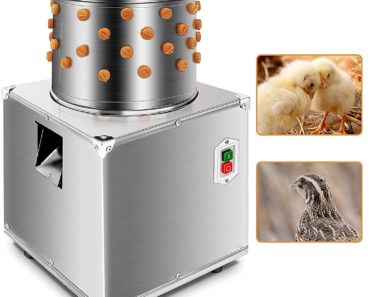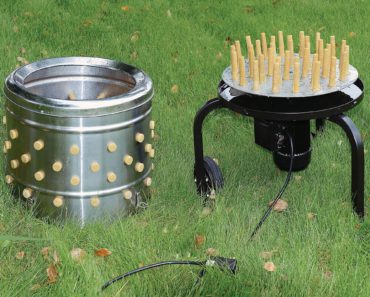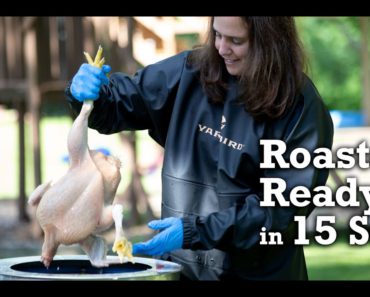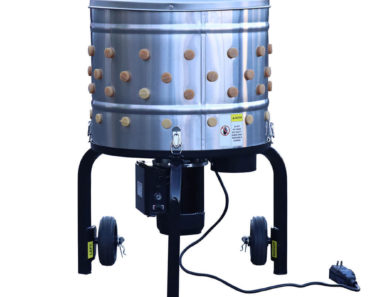Contents
- 1 How Much Oyster Shell Should You Feed Your Chickens? A Guide to Optimal Calcium Intake
- 2 The Importance of Oyster Shell for Chickens
- 3 Determining the Quantity of Oyster Shell to Feed
- 4 Precautions and Alternative Sources of Calcium
- 5 FAQ
- 5.1 How much oyster shell should I feed my chickens to ensure optimal eggshell quality?
- 5.2 What is the recommended daily dosage of oyster shell for chickens in order to prevent calcium deficiencies?
- 5.3 How do I determine the appropriate amount of oyster shell to provide my chickens based on the size of their flock?
- 5.4 Related Posts

We’re diving into the important topic of how much oyster shell to feed chickens. Whether you’re a beginner or experienced chicken keeper, understanding the proper amount of this vital calcium source is crucial for maintaining healthy hens. Join me as we explore the dos and don’ts to ensure your flock thrives!.
How Much Oyster Shell Should You Feed Your Chickens? A Guide to Optimal Calcium Intake
How Much Oyster Shell Should You Feed Your Chickens?
Calcium is an essential nutrient for chickens, as it plays a crucial role in egg production and overall bone health. One of the best sources of calcium for chickens is oyster shell.
But how much oyster shell should you feed your chickens?
The general rule of thumb is to offer free-choice oyster shell to your hens. This means that you should have a separate container filled with oyster shell available at all times for your chickens to consume as they need it.
It’s important to note that chickens will self-regulate their calcium intake based on their individual needs. Some may require more calcium than others, depending on factors such as age, breed, and whether they are actively laying eggs or not.
When offering oyster shell to your birds, make sure it is clean and fresh. Contaminated or moldy oyster shell can be harmful to chickens. It’s also advisable to provide crushed or ground oyster shell rather than whole shells, as this makes it easier for the chickens to consume and digest.
It’s worth mentioning that excessive calcium intake can lead to health problems, such as kidney damage or the formation of urinary stones in chickens. Therefore, it is crucial to monitor your flock and ensure they have access to a proper balance of calcium without overdoing it.
providing free-choice oyster shell and allowing chickens to self-regulate their calcium intake is the best way to ensure optimal health and productivity. Monitoring their consumption and providing a clean, fresh supply is essential for their well-being.

The Importance of Oyster Shell for Chickens
Chickens require a sufficient amount of calcium in their diet to maintain strong and healthy bones, as well as to support eggshell formation. Oyster shell is an excellent source of calcium, which makes it an essential supplement for chickens. Calcium deficiency can lead to weak bones, brittle eggshells, and even egg-binding in hens. By providing oyster shell to chickens, you can ensure they receive the necessary amount of calcium for optimal health and productivity.
Determining the Quantity of Oyster Shell to Feed
The amount of oyster shell to feed your chickens depends on several factors such as their age, breed, and environment. As a general guideline, you should offer free-choice oyster shell in a separate container alongside their regular feed. This allows the chickens to consume as much or as little as they need. Monitoring their consumption will give you an idea of how much oyster shell they require. It is recommended to provide approximately 1/4 to 1/2 cup of oyster shell per five birds per day.
Precautions and Alternative Sources of Calcium
While oyster shell is an effective source of calcium for chickens, there are a few precautions to keep in mind. It is important to provide crushed or ground oyster shell rather than whole shells, as the latter may not be easily digested by the chickens. Additionally, oyster shell should not be mixed directly into their feed, as some chickens may overconsume or avoid it altogether. If your chickens are not consuming enough oyster shell, alternative sources of calcium such as crushed eggshells or limestone can be offered as well. However, it is crucial to maintain a balance and ensure that the overall calcium intake is appropriate for your chickens’ needs.
FAQ
How much oyster shell should I feed my chickens to ensure optimal eggshell quality?
To ensure optimal eggshell quality, it is recommended to provide chickens with a steady supply of oyster shell. Oyster shell provides a good source of calcium, which is essential for the formation of strong and healthy eggshells.
The general guideline is to offer free-choice oyster shell to your chickens, meaning it should be available to them at all times. This allows the hens to regulate their own calcium intake based on their individual needs.
A common rule of thumb is to offer oyster shell in a separate container from their regular feed. This ensures that only the hens in need of extra calcium will consume it.
As for the amount of oyster shell to provide, there is no one-size-fits-all answer. The quantity will vary depending on factors such as the age and breed of your chickens, as well as the overall quality of their diet.
A good starting point is to offer approximately 1 tablespoon of oyster shell per 4-5 hens per day. However, it’s important to regularly monitor the eggshell quality and adjust the amount of oyster shell accordingly. If you notice thin or weak eggshells, you may need to increase the amount of oyster shell provided. Conversely, if the eggshells are excessively hard or have rough texture, you may need to reduce the amount.
Remember to always provide fresh, clean oyster shell and ensure access to clean drinking water. By monitoring and adjusting the oyster shell intake, you can help maintain optimal eggshell quality and support the overall health of your chickens.
What is the recommended daily dosage of oyster shell for chickens in order to prevent calcium deficiencies?
The recommended daily dosage of oyster shell for chickens to prevent calcium deficiencies is 1 teaspoon per bird. Oyster shell is an excellent source of calcium and is commonly provided to laying hens to support proper eggshell formation. It should be offered free-choice and made available at all times for the birds to consume as needed.
How do I determine the appropriate amount of oyster shell to provide my chickens based on the size of their flock?
To determine the appropriate amount of oyster shell to provide your chickens based on the size of their flock, you can follow these guidelines:
1. Estimate the number of chickens in your flock.
2. Calculate the average daily consumption of oyster shell per chicken. This can vary depending on factors such as age, breed, and egg-laying status.
3. Multiply the average daily consumption by the number of chickens in your flock to get the total daily consumption.
4. Determine how often you plan to refill the oyster shell container. For example, if you refill it every week, multiply the total daily consumption by 7.
5. Consider adding a small buffer to account for any variations or fluctuations in consumption.
For example:
Let’s say you have 20 chickens and the average daily consumption of oyster shell per chicken is 0.1 ounces. If you plan to refill the container every week, the calculation would be:
0.1 ounces x 20 chickens = 2 ounces/day
2 ounces/day x 7 days = 14 ounces/week
Therefore, you would need to provide approximately 14 ounces of oyster shell per week for your flock of 20 chickens.
Remember, it’s always better to slightly overestimate the amount of oyster shell rather than to run out. Providing your chickens with an adequate supply of oyster shell helps ensure they receive enough calcium for strong eggshells and overall health.
It is essential to provide adequate amounts of oyster shell to chickens in order to meet their calcium needs and ensure the health of their bones and eggshells. The recommended amount is approximately 1/4 cup of oyster shell per day for every four to six hens. However, it is crucial to monitor their intake and adjust accordingly based on their egg production and overall health. Remember, a balanced diet that includes oyster shell will contribute to strong eggshells and healthy chickens.





